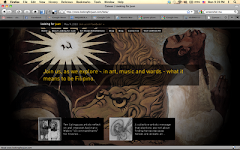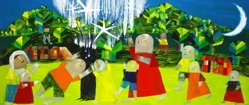Che Zablan, 28, is employed under the Department of Health's Doctors to the Barrios Program. Here's his piece, as published in the Philippine Daily Inquirer.
* * * * * * * * *
I AM a doctor to the barrio. For most people, I could not have made a better choice, but for a very few, I could not have made a worse or crazier one. In fact, the moment I utter those words, I see all sorts of reactions.
My family and friends are primarily concerned over my safety. After all, I could be assigned anywhere in the Philippines.
My superiors and colleagues, on the other hand, are afraid that I might stagnate professionally. The normal course for a newly licensed physician is to specialize. I won’t be able to do that in the rural areas.
Most people who first hear about my decision give me that you-must-be-crazy look and demand to know why. I have learned to just smile and vaguely explain that I really have nothing better to do or that I haven’t decided which medical field to specialize in. Sometimes, I am tempted to lie and say I am going abroad. This answer, I am sure, I would not have to explain myself.
It never fails to amaze me that people find it unusual that a young doctor would decide to work in the barrios and normal for him to work abroad. I thought I’d never find the perfect answers to all their questions until I was sent to a highland municipality in the northern province of Ilocos Sur.
My father felt reassured when I told him I have never felt safer in my entire life. I don’t speak Ilocano. I don’t know a single soul in the place. But when I walk on the street, everybody greets me. My dining table never runs out of fruits and vegetables given by the people. They invite me to dine in their homes although I am a total stranger.
This is contrary to what I experience every day in Manila. There, everybody speaks Filipino, but I feel like I could be mugged anytime. I could go around the whole metropolis without a single soul greeting me, much less inviting me to dine with their families. I am actually starting to feel that my family and friends in the city are the ones who need to take care.
It was tough to put on hold my dream of becoming an OB-gyn. However, I can still train to be one in a couple of years. That can wait, but the patients I serve might not make it if they don’t see a doctor right now. And while I may have put on hold my professional growth, I am definitely working on my personal growth.
I finally understood what being alone means on my first night and being independent on my first week here. I’ve realized what determination means when I see children walking five kilometers to get to school. I see what hard work means every time I see a farmer working under the sun in the middle of the day. Most importantly, I am learning what a doctor should do: to make a difference in people’s lives.
There are nights when I feel like paying a thousand bucks just to have a cup of caramel macchiato or pay slight less than that for a choco nutty sprinkle donut. However, these cravings are gone as soon as I get freshly brewed kapeng barako and kalamay—of course, for free.
On days when I can’t find the perfect medicine or order the
 ideal laboratory procedure, I am sorely tempted to take a bus back to Manila. But these are soon forgotten when I cross hanging bridges and rivers or walk along rice terraces just to see my patients.
ideal laboratory procedure, I am sorely tempted to take a bus back to Manila. But these are soon forgotten when I cross hanging bridges and rivers or walk along rice terraces just to see my patients.When I get the you-must-be-crazy look, I tell people about the hanging bridges and rice terraces, but most of all about the barrio’s most important treasure: its people. They make my job so much easier. When they say thank you, they mean it. When they ask me how I am, they care enough to wait for my response. These are the people who teach me every day that simple living is so much better.
But when I am sick of answering why I chose to be a doctor to the barrio, I just say, “Why in the world not?”
* The artwork is an image of Serg Bumatay's as yet untitled acrylic on canvas artwork, which will be used as one of several illustrations in Iris Gem Li's The Boy Who Touched Heaven, an upcoming children's book from Illustrador ng Kabataan and CANVAS.





1 comment:
Thanks for posting my articl:) I would just like to say that I am a SHE, not a HE:) But thanks again.
Post a Comment